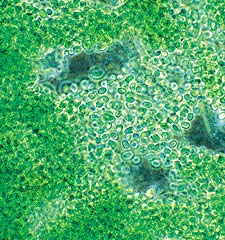
Data from NASA’s Terra satellite is adding to our understanding of how pollution spreads around the globe. The information will help scientists protect and understand the Earth.
NASA funded scientists from the National Center for Atmospheric Research (NCAR), Boulder, Colo., will present two studies focusing on global air pollution. Their presentations are part of the 2004 Joint Assembly of the American and Canadian Geophysical Unions.
David Edwards will discuss “Observations
How dolphins evolved to fly like birds under water
Physicists in Japan have discovered how the surface of a dolphin’s skin reduces drag and helps them glide smoothly and quickly through water. These findings could help scientists design faster, energy-efficient boats, ocean liners, and submarines. This research is published in the Institute of Physics journal, Journal of Turbulence.
Scientists have known for some time that dolphins have evolved streamlined bodies which
In an experiment that demonstrates how maps of the genetic codes of simpler organisms can shed light on human disease, a computerized comparison of the complete genetic codes of a type of algae, a weed and humans has led medical researchers to a gene linked to a human illness.
The comparison allowed researchers at Washington University School of Medicine in St. Louis to locate human genes that code for proteins likely to become part of hair-like structures on cells known as cilia or flagel

The most northerly active volcano on Russia’s Kamchatka Peninsula is once again erupting, dusting the surrounding snow-white landscape with a wide expanse of dark ash that is visible from 800 km away in space.
This image of the Kamchatka Peninsula on Russia’s East Coast was acquired on 11 May 2004 by the Medium Resolution Imaging Spectrometer (MERIS) instrument on ESA’s Envisat satellite in reduced resolution mode.
Two thirds of the way up the Peninsula can be seen
Evidence is mounting that 251 million years ago, long before the dinosaurs dominated the Earth, a meteor the size of Mount Everest smashed into what is now northern Australia, heaving rock halfway around the globe, triggering mass volcanic eruptions, and wiping out all but about ten percent of the species on the planet. The “Great Dying,” as it’s called, was by far the most cataclysmic extinction event in Earth’s history, yet scientists have been unable to finger a culprit as they have with

New research shows that what was once considered a universal constant in oceanography could actually vary in the future – depending on the ecological scenarios that affect competition for resources among microscopic marine plants, which play a role in global climate.
The future of these plants, called phytoplankton, is important because they exist at the base of the marine food web and represent a large source of food for fish. Also, they affect global climate by using atmospheric carbon di